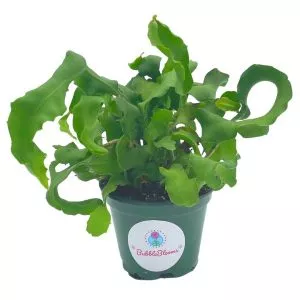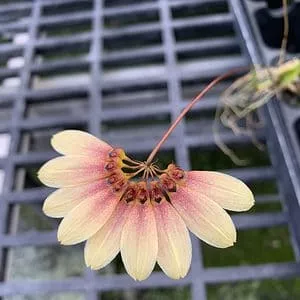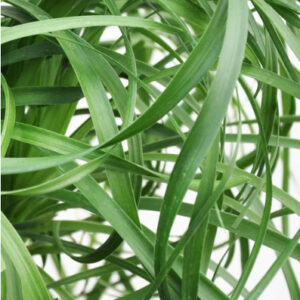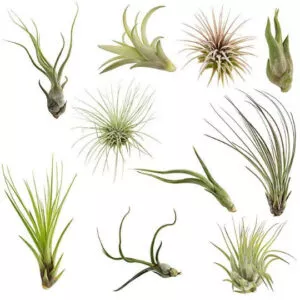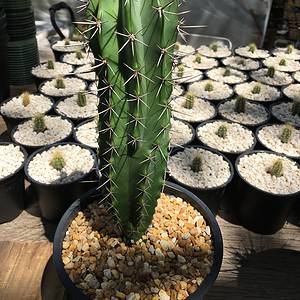No products in the cart.
Table of Contents
Vanilla, the fragrant flavor beloved in desserts and beverages worldwide, originates from the vanilla bean orchid (Vanilla planifolia).
This remarkable orchid provides the essence of vanilla and showcases stunning, tropical-like foliage. Caring for a vanilla bean orchid may seem daunting, but with the proper knowledge, it can thrive as a beautiful and aromatic addition to your home.
This comprehensive guide will delve into all aspects of vanilla bean orchid care, including scientific information, growing conditions, propagation, varieties, and how to combat common pests and diseases.
Plant Name: Vanilla planifolia
Other Name: Vanilla Orchid, Vanilla Beans
Plant Type: Vining orchid and perennial
Native Areas: North America, Caribbean, Central America
Light Requirements: Partial sun and shade
Watering: Moderate
Fertilizer: Orchid Fertilizer
Growth: 75-100 ft. long (outdoors), 8-10 ft. long (indoors)
Propagation: Stem Cuttings and Seed
Soil Type: Acidic
Temperature: Moderate
Toxicity: Non-toxic
USDA Hardiness Zones: 11-12
More About Vanilla Orchids
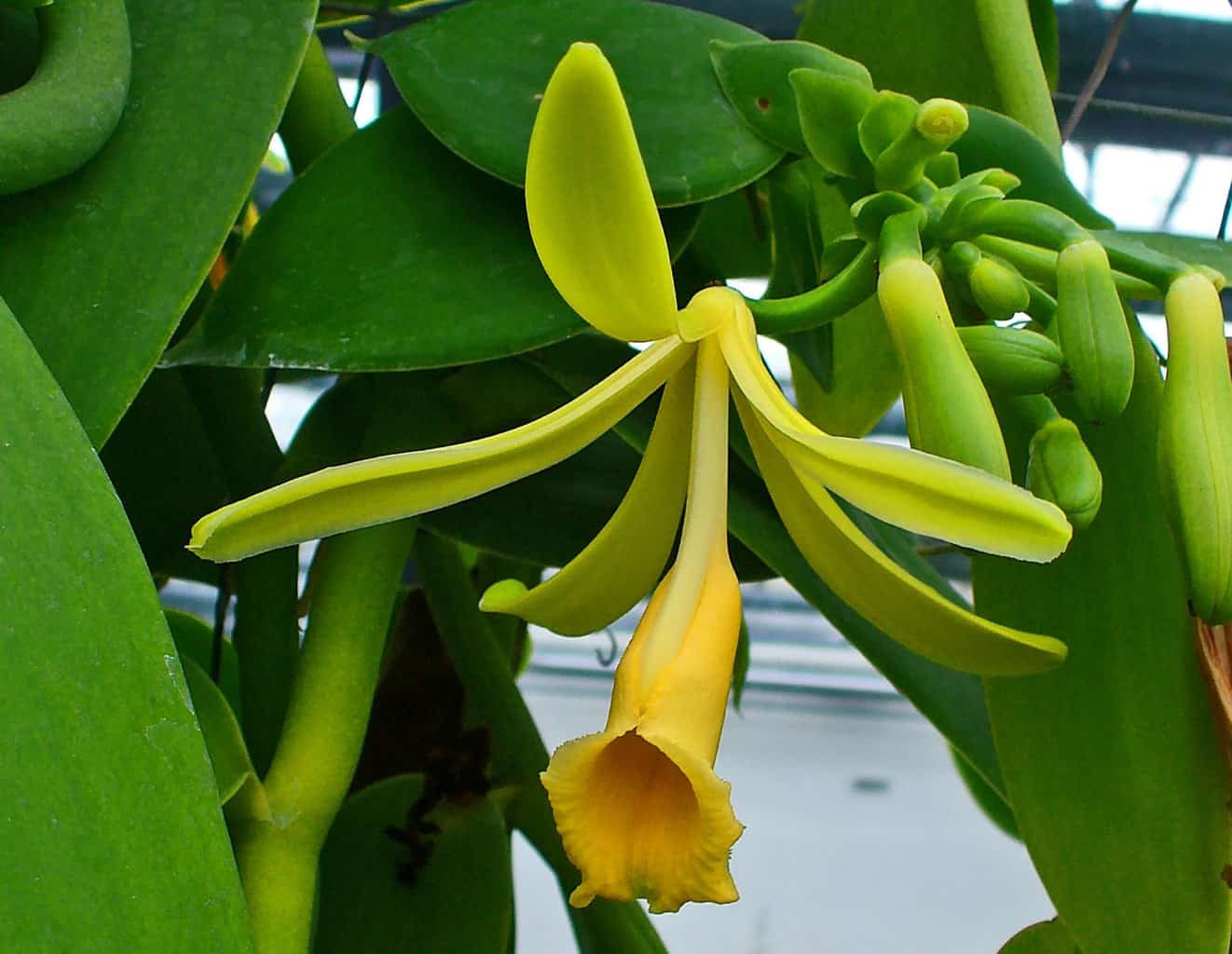
The orchid, or the fancy name Vanilla planifolia, is native to Mexico and is a vining orchid. It is a highly sought-after spice. Why? As vanilla adds flavor to baking and other confections. The vanilla plant belongs to the Orchidaceae or orchid family and is an epiphytic producing long vines.
The Spanish name translates to the small pod. The bean is the plant’s fruit, and the Aztecs harvest the piece to use with cocoa as a flavoring centuries ago. The people dried the bean pods to produce that distinctive flavor we know today.
You can find people using the whole pod to draw the flavor out using infusion, or they split it to scrape out the seeds. Those seeds people add to ice creams or some custard-based dishes. Yet, some growers refer to the plant as a flat-leaved orchid.
You can find it in two variegated forms. The first is white variegation found on the leaf margins. While the other orchids have yellow variegation on the inside of the leaves when you grow vanilla in the wild, it can grow up to 100 feet or more, but as a houseplant, the vanilla vine grows to 15 feet.
The variegated vanilla vine is a slower grower than all-green vanilla beans. Neither is the latter desirable, as the Madagascar vanilla beans are used in production commercially. Still, when grown out of its native habitat of Mexico, it must be hand-pollinated.
You do not always have the bees in Mexico to do all the pollination work.
How to Care For Vanilla Orchid

When it comes to vanilla orchid care and planting, it is not as simple as planting some seeds and watching them take off. Your vanilla orchid needs special care, but never let it discourage you. The important thing is to provide your vanilla orchids with a controlled environment. With tender, loving care, you will produce vanilla beans in no time to enjoy homemade vanilla extract.
Vanilla Beans Soil
Growing vanilla bean plants starts as a terrestrial orchid; hence, it needs more than sphagnum moss (peat moss). So, it helps soil to the potting medium for added nutrients.
Once your vanilla bean orchid grows vines with aerial roots, you can change the potting medium to either orchid bark or sphagnum moss. Also, provide your plant with a covered moss pole for climbing, securing your plant with floral wire.
Alternatively, you can also use an orchid potting mix. The important thing when you grow vanilla is to provide the root system with aeration. While the flowers are not the main attraction, they are still pretty in a yellow-pale green.
Another important note about using support is that it starts to dangle once it reaches the top. Do not get the urge to fixate those twine into the pole. Just leave them be.
Light Requirements

Vanilla planifolia prefers indirect sunlight in the morning and bright light in the afternoon to produce beans. Too much direct sunlight burns your plant and can damage the air roots. So, growing vanilla in the south with bright shade from larger trees is ideal. When grown as an indoor plant, it needs similar lighting as outdoors with enough air circulation.
Watering vanilla orchid
In the tropical climate, the vanilla orchid receives moisture, and you must keep the soil moist in the home. The important thing is to let the soil dry before watering, as overwatering can lead to root rot. To help, you can invest in a moisture meter to determine the moisture in the ground.
Another important tip is to leave your vanilla bean plant to dry out for a couple of weeks when it starts to bloom between watering.
Fertilizing your vanilla orchid
In vanilla orchid care, it appreciates a feed high in nitrogen, like 30-10-10 weekly in the growing season. You can use a diluted feed after watering your plant. When your vanilla bean plant goes dormant, you can give it a light feed diluted, such as a 20-20-20 one. Feed your plant well in the spring and summer months.
Temperature and Humidity
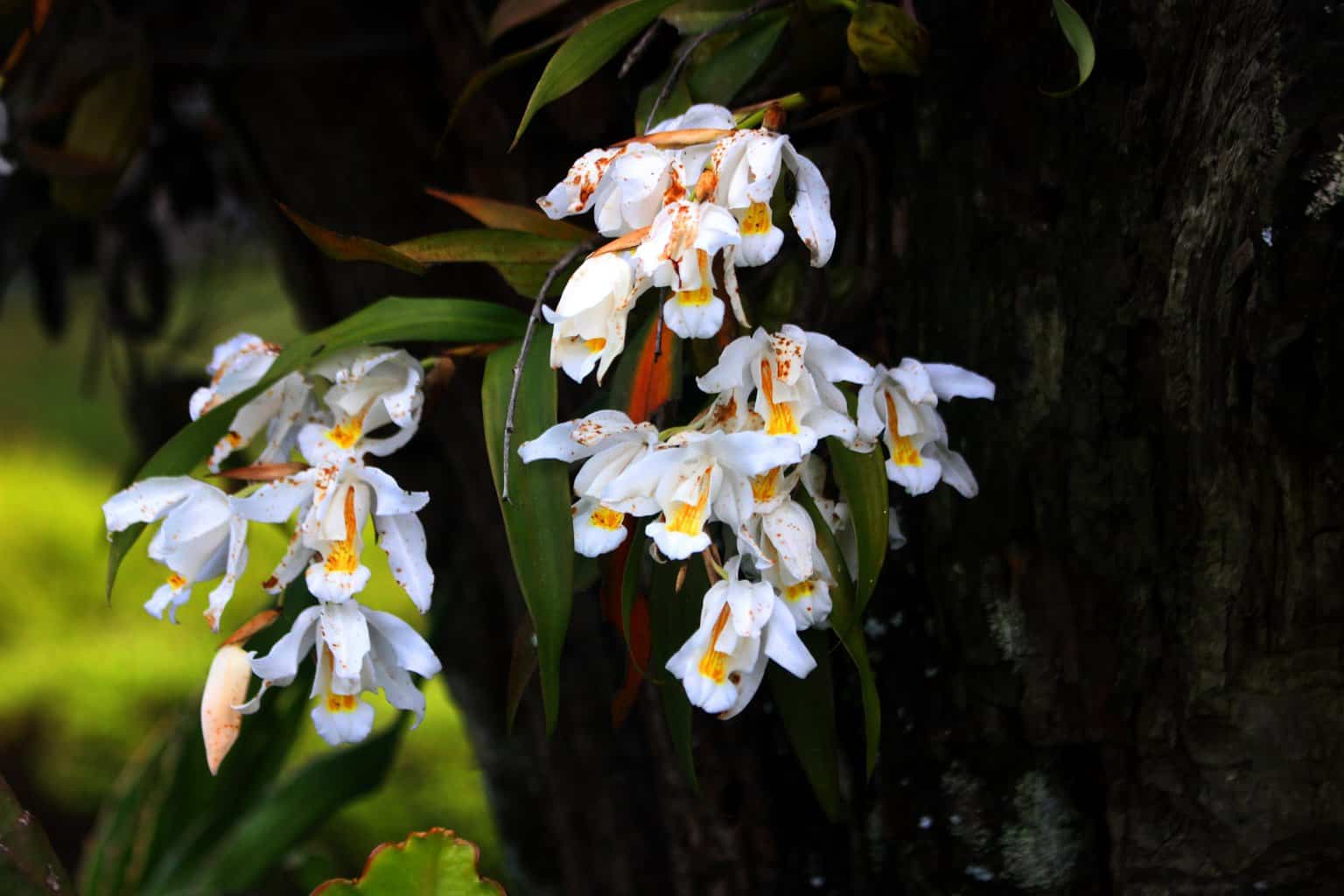
The vanilla orchids prefer high humidity with warm temperatures as in tropical forests; they grow along tree trunks. When the temperature is below 75°F, it turns the leaves yellow and limp and will not produce a vanilla bean pod. The vanilla bean plant needs at least 85% humidity.
You can mist your plant daily using a spray bottle. Alternatively, place a pebble tray below your plant, or it helps to install a humidifier.
Pollinating and harvesting vanilla bean plants
When you grow vanilla beans at home, you must hand-pollinate each flower. Once pollinated, it can take about nine months for the seed pods to develop and grow about 6 inches long.
After harvesting the pods, you must cure them before using the seeds to make extract. First, it helps to place the pods in bright light or a sun lamp. Then, wrap the seed pods in cloth at night to help with condensation.
Once the vanilla pods become dark brown and shriveled, you can store them in a dark place for a month to enhance the flavoring. It helps to keep the seed pods in an airtight container indefinitely for prolonged use. Still, never freeze vanilla, as it will shorten its shelf life.
The fantastic thing is that you can infuse the spent pods in some alcohol or blend them with sugar to use later. The best is to leave the pods in some vodka for up to eight months to make an extract. Furthermore, you can remove the vanilla seeds to add to the ice cream.
-
Free Shipping$20.99Sold By: Gar-Zen Botanical Design
In stock (can be backordered)
Snake Plant Dwarf Birds Nest Plants (2) Ship Free
Rated 4.86 out of 5 based on 49 customer ratings00Sold By: Gar-Zen Botanical Design -
$39.99Sold By: BubbleBlooms
In stock
Curly Sue big in 4 inch pot, Epiphyllium guatemalensis mostrouse, Curly locks orchid cactus, pink flower cactus, grows large
Only 96 available and it’s in 1 people’s basketRated 4.81 out of 5 based on 279 customer ratings00Sold By: BubbleBlooms -
Free Shipping$34.99Sold By: Aloha Hawaii Orchids
$39.99In stock
Bulb. Daisy Chain ( Makoyanum x Cumingii ) 2″
Rated 4.65 out of 5 based on 268 customer ratings00Sold By: Aloha Hawaii Orchids -
$44.99Sold By: Carlo's Plant Farm
In stock
Ponytail Palm – 4 inch pot | Carlo`s Plant Farm
Rated 5.00 out of 5 based on 22 customer ratings00Sold By: Carlo's Plant Farm
Propagating Vanilla Orchid
The best way to propagate Vanilla planifolia is to use cuttings instead of tiny seeds. It helps to take a cutting with a few nodes to give you the best success rate.
Then, leave the cutting to dry for up to two days. Once dry, you can place the cutting in well-drained soil like an orchid potting mix in an orchid pot. You can dip the cut end into a rooting hormone to encourage root growth.
Once planted, it helps to stake the cutting for added support, with one node touching below the soil surface with the leaves removed. You can then water the cutting and leave it dry between watering.
Vanilla Orchid Varieties
If you are interested in other orchids, a few are available to buy that produce fruit.
Vanilla pompona
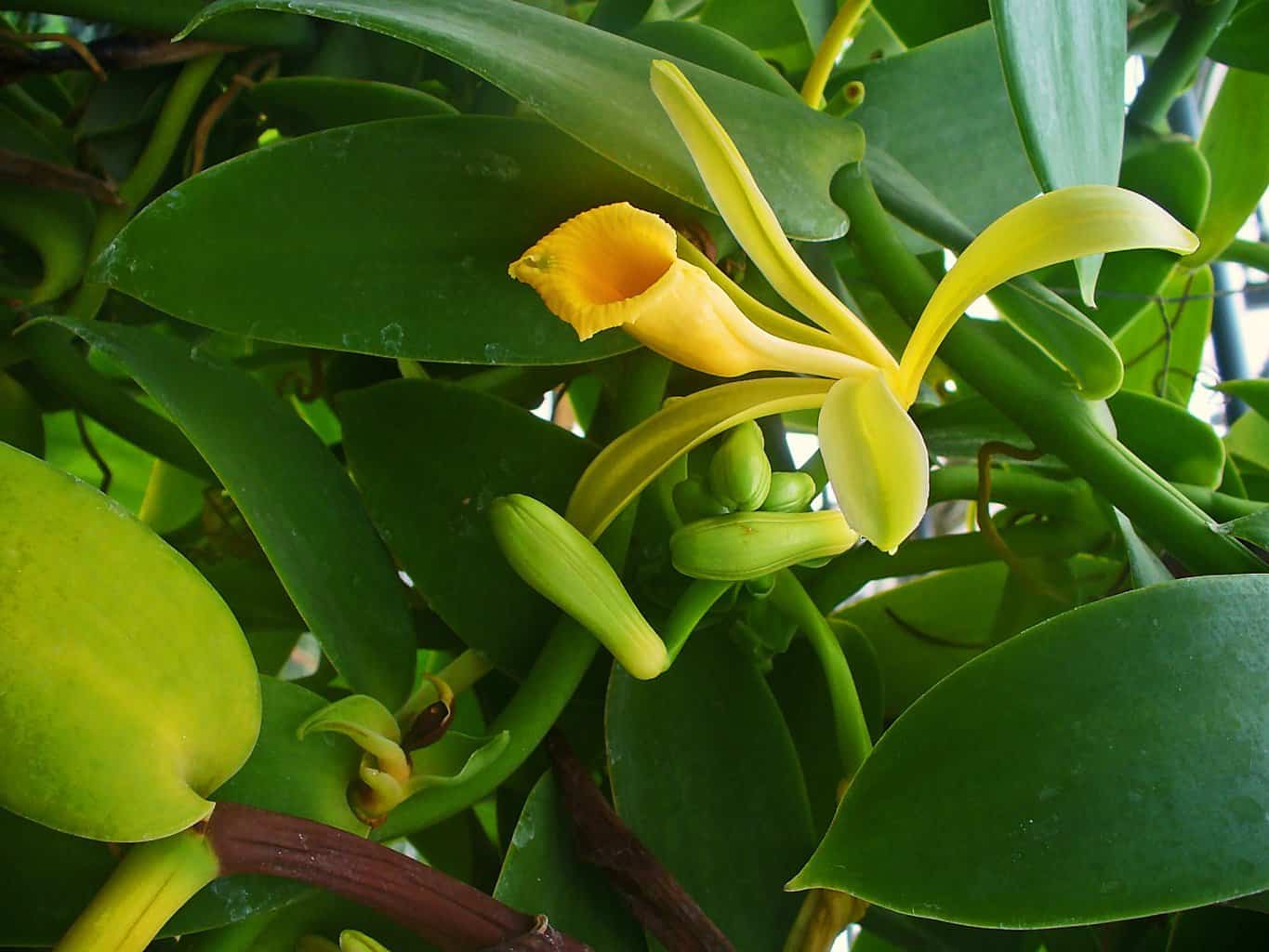
The West Indian Vanilla has large, glossy green leaves with long, thin stems. The plant is native to Mexico and South Tropical America. It also produces flowers in bunches growing into long pods. Yet, it is not a popular vanilla flavoring.
Vanilla tahitensis

The Tahitian vanilla orchids have yellowish to green flowers producing squat pods and are a common vanilla bean cultivar with a distinct flavor. So, growing the plant in this variety also provides dish flavoring.
Vanilla aphylla
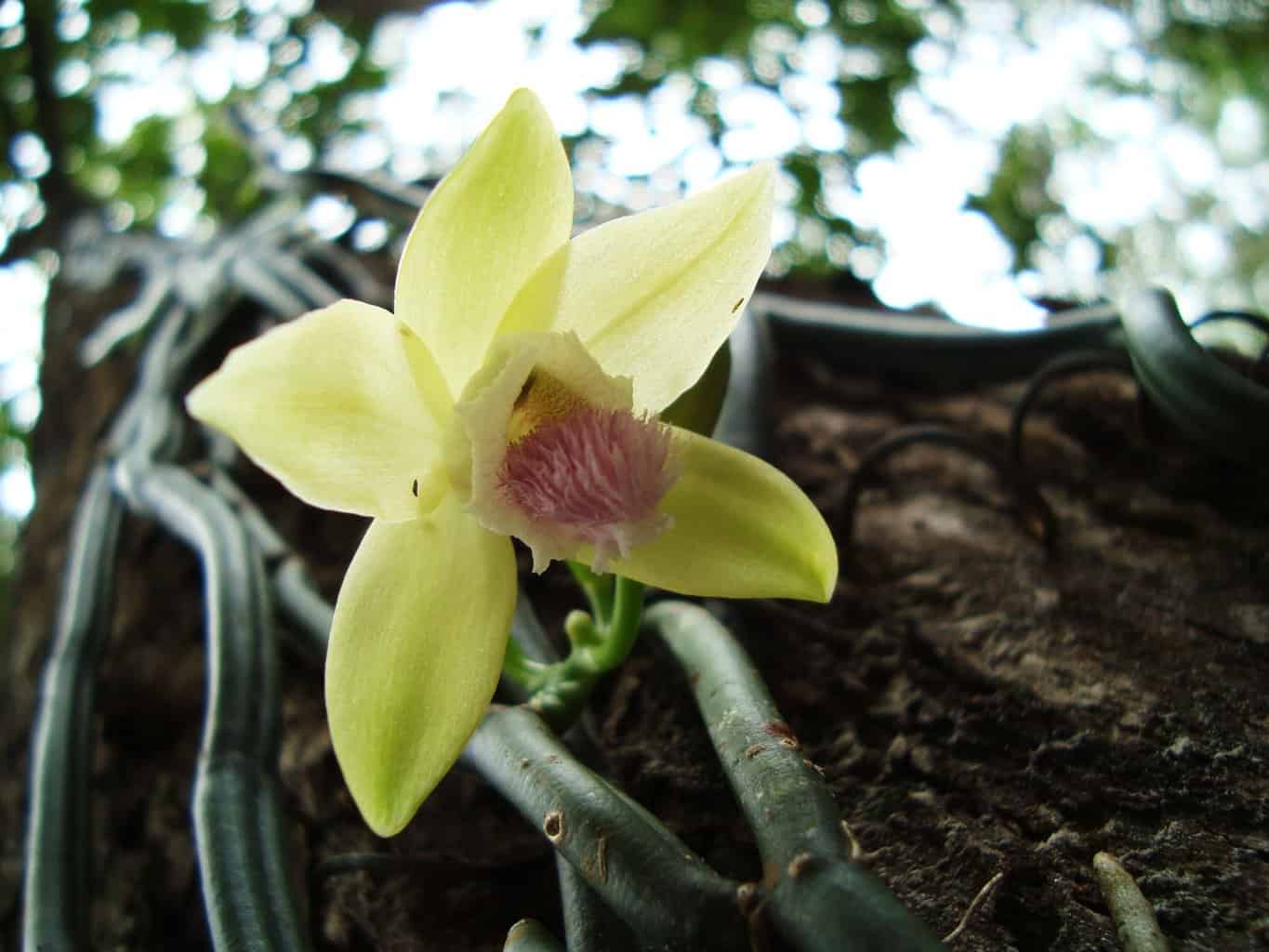
The vanilla orchid you find is native to Southeast Asia and is a leafless plant. You see up to four flowers bloom during spring and summer. The flowers grow from the internodes on the vines.
Vanilla mexicana
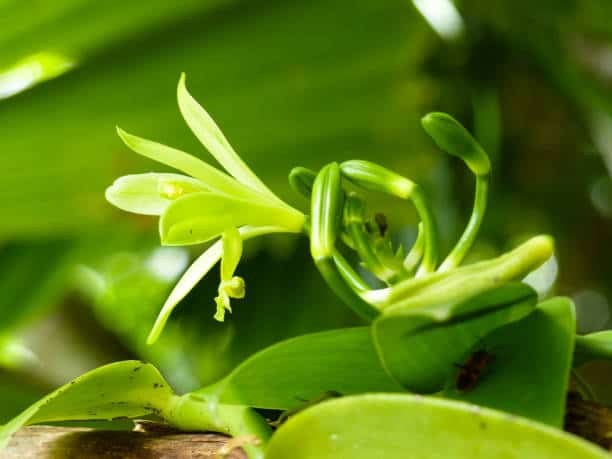
The Mexican vanilla orchid is native to Central and South America, Mexico, and Southern Florida. It is another common variety with squat and short growth.
Vanilla Orchid Diseases and Pests
When vanilla orchids grow, you can face a few problems with your plant. So, it helps to keep the following in mind.
Sometimes you can face growing problems with the plant’s stem from under-watering or the lack of humidity. Similar over-watering can also result in root and stem rot. If you notice brown stems looking flimsy and saturated soil, it helps to remove the whole plant.
Then trim the rotted parts and transplant them into a new dry potting medium. When it comes to pests, you can see mealybugs or spider mites. To remove mealybugs, we recommend using rubbing alcohol on a cotton swap to force these bugs to release.
Another alternative is to use neem oil to treat both these infestations.
Frequently Asked Questions
The orchid typically begins to form beans when they reach 3-5 years of age.
Yes, vanilla orchids can thrive indoors with the right growing conditions.
The flower lasts one day, but a healthy plant produces clusters of flowers.
Using a humidity tray, room humidifier, or misting the orchid can help increase humidity.
These orchids prefer slightly acidic to neutral pH levels, around 6.0 to 7.0.
Pruning should be done as needed to remove dead or yellowing leaves. Over-pruning should be avoided.
Whether you want to buy, sell, or simply reach out to other plant enthusiasts, Plantly is the right place to be!
-
Free Shipping$156.04Sold By: BONSAI WORLD LLC
Only 1 left in stock
Ficus Kaneshiro Bonsai Tree (ficus microcarpa ‘kaneshiro’)
Only 1 available and it’s in 1 people’s basketSold By: BONSAI WORLD LLC -
$45.00Sold By: Beauties & Beasts
$50.00In stock
Ceramic Planters- Rae Dunn by Magenta Stem Print- Set of 2
Rated 4.83 out of 5 based on 24 customer ratings00Sold By: Beauties & Beasts -
Free Shipping$18.95Sold By: CTS Air Plants
In stock
Air Plants Tillandsia Collection of 10 Easy Houseplants
Only 100 available and it’s in 2 people’s basketSold By: CTS Air Plants -

